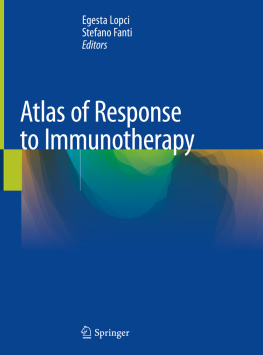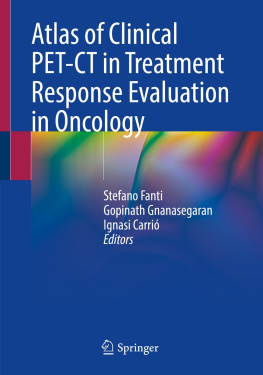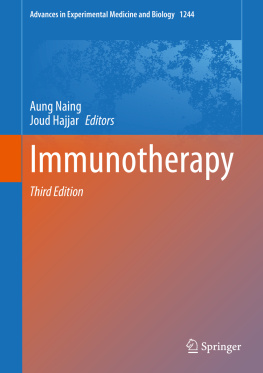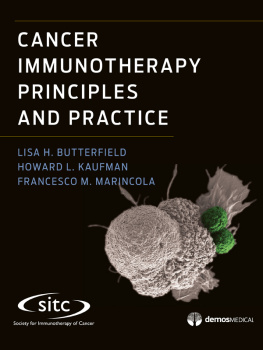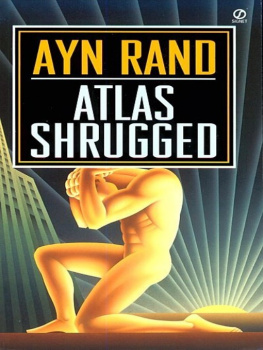Egesta Lopci - Atlas of Response to Immunotherapy
Here you can read online Egesta Lopci - Atlas of Response to Immunotherapy full text of the book (entire story) in english for free. Download pdf and epub, get meaning, cover and reviews about this ebook. year: 2020, publisher: Springer International Publishing, genre: Home and family. Description of the work, (preface) as well as reviews are available. Best literature library LitArk.com created for fans of good reading and offers a wide selection of genres:
Romance novel
Science fiction
Adventure
Detective
Science
History
Home and family
Prose
Art
Politics
Computer
Non-fiction
Religion
Business
Children
Humor
Choose a favorite category and find really read worthwhile books. Enjoy immersion in the world of imagination, feel the emotions of the characters or learn something new for yourself, make an fascinating discovery.
- Book:Atlas of Response to Immunotherapy
- Author:
- Publisher:Springer International Publishing
- Genre:
- Year:2020
- Rating:3 / 5
- Favourites:Add to favourites
- Your mark:
- 60
- 1
- 2
- 3
- 4
- 5
Atlas of Response to Immunotherapy: summary, description and annotation
We offer to read an annotation, description, summary or preface (depends on what the author of the book "Atlas of Response to Immunotherapy" wrote himself). If you haven't found the necessary information about the book — write in the comments, we will try to find it.
Atlas of Response to Immunotherapy — read online for free the complete book (whole text) full work
Below is the text of the book, divided by pages. System saving the place of the last page read, allows you to conveniently read the book "Atlas of Response to Immunotherapy" online for free, without having to search again every time where you left off. Put a bookmark, and you can go to the page where you finished reading at any time.
Font size:
Interval:
Bookmark:
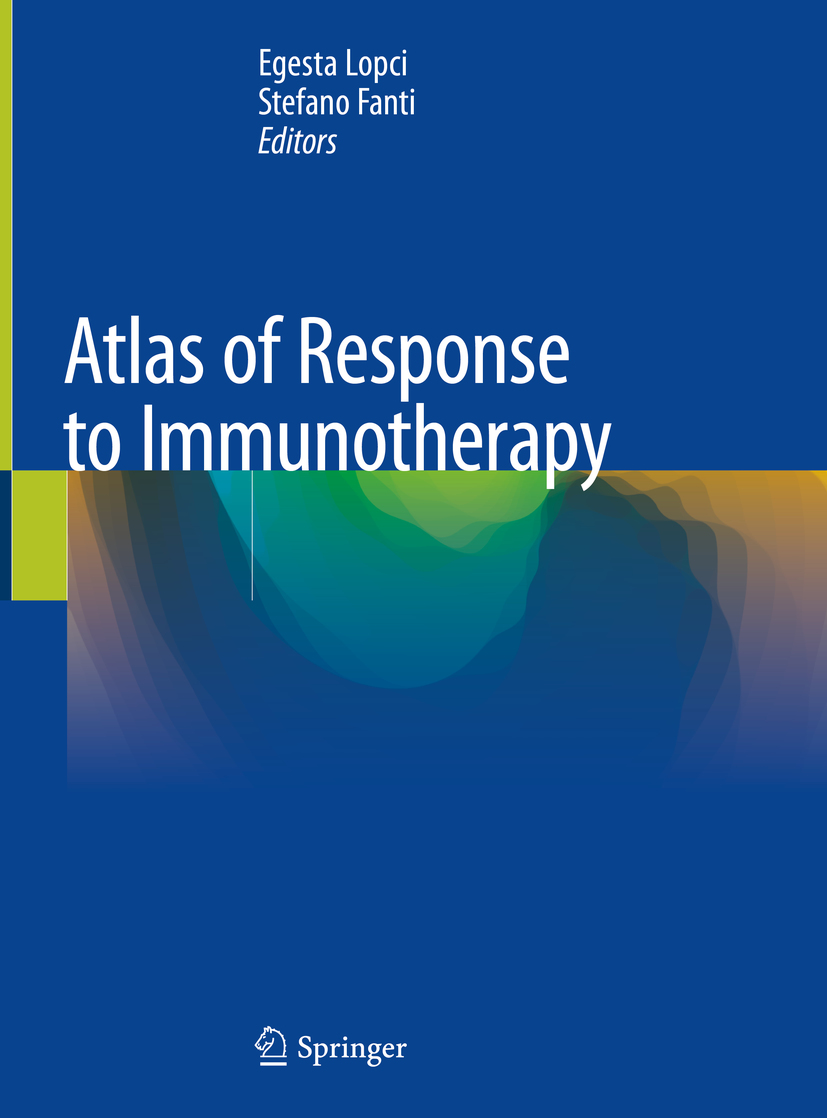

This Springer imprint is published by the registered company Springer Nature Switzerland AG
The registered company address is: Gewerbestrasse 11, 6330 Cham, Switzerland
The armamentarium of publications on immunotherapy for oncological use has exponentially increased in the last years. This is a direct consequence of the major impact of immunological-based treatment on cancer and in particular of the wide adoption of checkpoint inhibitors: the assignment of the 2018 Nobel Prize in Physiology or Medicine to the scientists who first described the clinical utility of these new drugs confirms the relevance of the argument. Consequently, there is a proliferation of texts on immunotherapy, and yet, why publish another book on such a topic? When planning the outline of this book, our unique purpose was to answer a clinical demand: how to investigate and interpret the tumor response to immunotherapy. In fact, much is known about principles and the role of immunotherapy, but much less is clear about the best strategy to evaluate the response to therapy, in particular by imaging. Being images the most immediate way to convey knowledge and taking into account our expertise in molecular imaging, we could only choose an atlas as the best format to fit the purpose, to clarify the issue and provide clear examples of clinical use.
Once we set up the aim of the project, the pathway to complete the task passed through the involvement of great experts in the field. Despite the global attempt to assess the benefit of immunotherapy in various oncological settings, the response evaluation by means of imaging can still be considered unsettled. Anatomical imaging is based on morphology alone, therefore, it is not an optimal solution; on the other hand, functional imaging through metabolic tracers can face problems of interpretation. An integrated approach taking advantage of both information is probably the best way to procede, and thus we decided to focus on hybrid imaging with PET/CT. A mindful and malleable way of thinking is nevertheless mandatory when considering hybrid imaging for evaluating the response to therapy: not only clinicians must be aware of the results obtainable on imaging, but most importantly they must know how to use them. Imagers, on the other side, should acquire confidence in reading and documenting results, allowing experience and proper knowledge transpire from the reports. Experience is in fact a key element for every undertaking, even more crucial for medical specialty. This book has focused on this specific element, providing by means of didactic images direct examples of everyday experience with immunotherapy response assessment, not leaving aside exceptions and minority reports. We address the manuscript to every medical specialty involved in the field and to trainees requiring insight on what to expect as specialists from molecular imaging when tumor response to immunotherapy is questioned. Please enjoy the reading!
The development of cancer immunotherapy is crucial in the history of cancer therapy. In fact, the cancer immunotherapy demonstrated to be active showing durable responses in several human cancers. Moreover, the safety profiles of many cancer immunotherapy approaches resulted in milder and more manageable than traditional or targeted cancer therapy.
Biologically, the loss of normal cellular regulatory process and the accumulation of several genetic alterations characterized the cancer evolution determine the expression of neoantigens or differentiation antigens. These events can lead to the presentation of peptides bound to major histocompatibility class I (MHCI) molecules on the surface of cancer cells, discerning them from their normal counterpart. The CD8+ T cells, produced spontaneously in cancer patients, are able to recognize these cancer-specific peptide-MHCI complexes. Unfortunately, even when T-cell responses occurred, they rarely induced protective immunity, and the persistent deletion of cancer cells expressing T-cell targets (immune editing) may enable cancers to evolve to avoid attack []. Therefore, the immune response in cancer reflects a series of carefully regulated events that may be perfectly well addressed not singly but as a group. The immune checkpoint inhibitors modulate the interaction between T cells (which are exhausted in their function) and tumor cells in the tumor microenvironment. Targeting CTLA-4 or PD-1/PD-L1 reverses the exhaustion of cytotoxic T lymphocytes, thus leading to the elimination of tumor cells via re-induction of the natural function of the T-cell population.
Font size:
Interval:
Bookmark:
Similar books «Atlas of Response to Immunotherapy»
Look at similar books to Atlas of Response to Immunotherapy. We have selected literature similar in name and meaning in the hope of providing readers with more options to find new, interesting, not yet read works.
Discussion, reviews of the book Atlas of Response to Immunotherapy and just readers' own opinions. Leave your comments, write what you think about the work, its meaning or the main characters. Specify what exactly you liked and what you didn't like, and why you think so.

